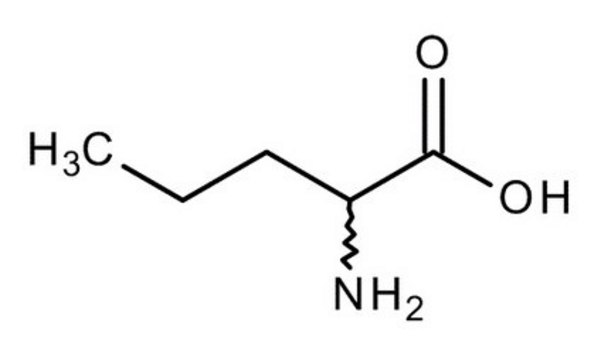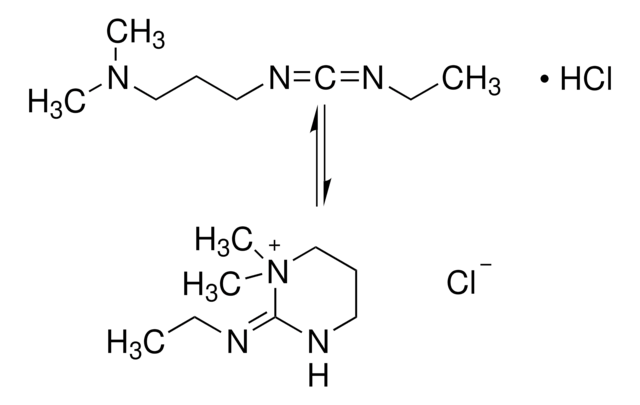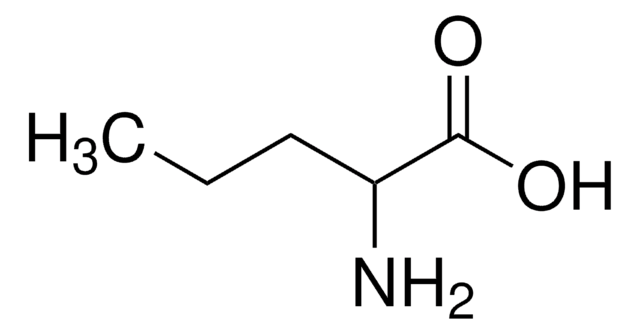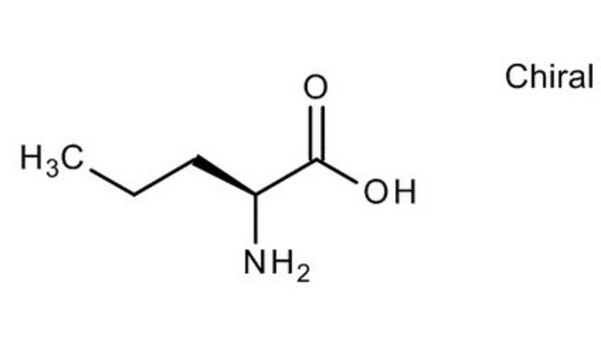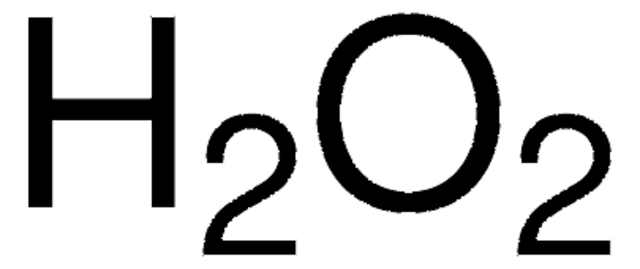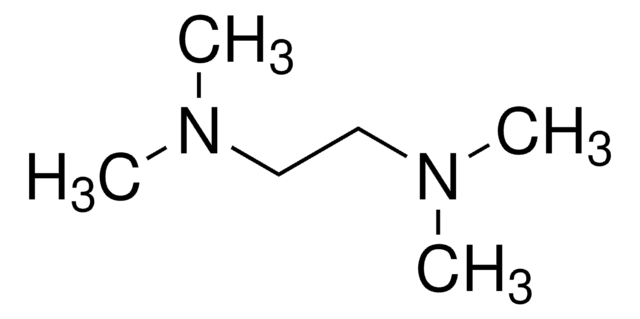851620
D-Norvaline
99%
Synonym(s):
(R)-(−)-2-Aminopentanoic acid
Sign Into View Organizational & Contract Pricing
All Photos(1)
About This Item
Linear Formula:
CH3CH2CH2CH(NH2)CO2H
CAS Number:
Molecular Weight:
117.15
Beilstein:
1721161
EC Number:
MDL number:
UNSPSC Code:
12352200
eCl@ss:
32160406
PubChem Substance ID:
NACRES:
NA.22
Recommended Products
Assay
99%
form
crystals
optical activity
[α]20/D −24°, c = 10 in 5 M HCl
optical purity
ee: 98% (GLC)
reaction suitability
reaction type: solution phase peptide synthesis
mp
>300 °C (lit.)
application(s)
peptide synthesis
SMILES string
CCC[C@@H](N)C(O)=O
InChI
1S/C5H11NO2/c1-2-3-4(6)5(7)8/h4H,2-3,6H2,1H3,(H,7,8)/t4-/m1/s1
InChI key
SNDPXSYFESPGGJ-SCSAIBSYSA-N
Physical form
α-Amino acid analog with unnatural, (R)-configuration
Storage Class Code
13 - Non Combustible Solids
WGK
WGK 3
Flash Point(F)
Not applicable
Flash Point(C)
Not applicable
Personal Protective Equipment
dust mask type N95 (US), Eyeshields, Gloves
Choose from one of the most recent versions:
Already Own This Product?
Find documentation for the products that you have recently purchased in the Document Library.
Xiaofang Tang et al.
Kidney & blood pressure research, 44(2), 245-263 (2019-05-10)
Diabetic nephropathy (DN) is a leading cause of end-stage renal disease. Microalbuminuria (MA) is widely used to predict early progressive renal function decline (ERFD) of DN in type 2 diabetes mellitus (T2D) patients, but the sensitivity and specificity of MA
Arina G Shokhina et al.
Redox biology, 21, 101071-101071 (2018-12-24)
Redox-sensitive fluorescent proteins (roFPs) are a powerful tool for imaging intracellular redox changes. The structure of these proteins contains a pair of cysteines capable of forming a disulfide upon oxidation that affects the protein conformation and spectral characteristics. To date
Iris Thondorf et al.
Bioorganic & medicinal chemistry, 19(21), 6409-6418 (2011-10-01)
The proton-coupled amino acid transporter hPAT1 has recently gained much interest due to its ability to transport small drugs thereby allowing their oral administration. A three-dimensional quantitative structure-activity relationship (3D QSAR) study has been performed on its natural and synthetic
Our team of scientists has experience in all areas of research including Life Science, Material Science, Chemical Synthesis, Chromatography, Analytical and many others.
Contact Technical Service